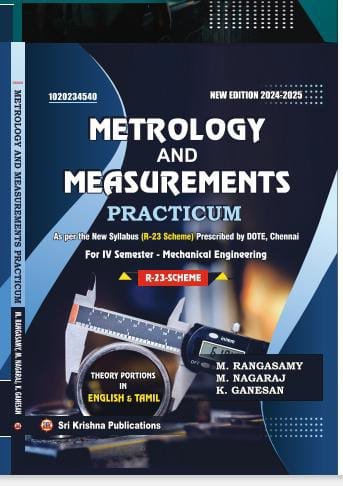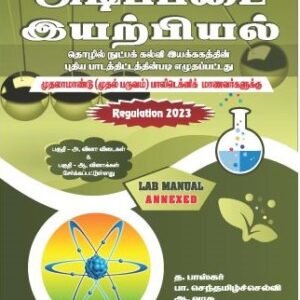1020234640 METROLOGY AND MEASUREMENTS
PRACTICUM
Syllabus contents
THEORY
UNIT I: LINEAR MEASUREMENTS AND COMPARATORS Periods
Basics of Metrology
Scope of Metrology, basic units, important terminology, Measurement – Need,
Process, Role in quality control; Factors affecting measurement – SWIPE;
international standardization, the bureau of Indian standards – important elements
of measurements – methods of measurements.
Precision – accuracy – definition – factors affecting the accuracy of the measuring
system – general rules for accurate measurements – precautions for use of
instruments so as to avoid in accuracy in measurements – reliability – definition,
Measurement uncertainty, Measurement system analysis, Compare systematic
error and random error, Selection of measuring instruments – Calibration of
measuring instruments.
Linear Measurements
Linear Measuring Instruments – Vernier caliper, Micrometer, Vernier height gauge,
Depth Micrometer, bore gauge, Telescoping gauge; Gauge blocks – Use and
precautions, possible sources of errors in micrometers – slip gauges –
requirements – Indian standard – care and use.
Comparator
Comparators – Working and advantages – Types – Mechanical and Pneumatic
Comparators.
Practical Exercises:
Ex. No Name of the Experiment Hours
1 VERNIER CALIPER
i) Measure the dimensions of ground MS flat/Cylindrical bush using
Vernier Caliper.
ii) Compare the results with Digital Vernier Caliper.
2 OUTSIDE MICROMETER
i) Measure the diameter of a wire using micrometer
ii) Compare the results with a digital Outside micrometer.
3 INSIDE MICROMETER
i) Measure the inside diameter of the bore of a bush cylindrical
component using Inside micrometer
ii) Compare the results with digital inside micrometer.
4 SLIP GAUGES
Measure the thickness of ground MS plates using slip gauges.
5 VERNIER HEIGHT GAUGE
Measure the height of gauge blocks or parallel bars using vernier height
gauge.
6 MECHANICAL COMPARATOR
Find out the measurement of a given component and Compare with a
standard component using a mechanical comparator and slip gauge.
THEORY
UNIT II: ANGULAR MEASUREMENTS, CMM, SURFACE & ADVANCED METROLOGY
Angular Measurements: Angular measuring instruments – Bevel protractor, Angle
gauges, Precision level, Sine bar, Autocollimator. Opto-mechanical measurements
using a measuring microscope and Profile projector. Measurement of Screw threads
– Single element measurements – Pitch Diameter, Lead, Pitch. Measurement of
Gears – purpose – Analytical measurement – Runout, Pitch variation, Tooth profile,
Tooth thickness, Lead.
Coordinating measuring Machine: Basic concept of CMM – Types of CMM –
Constructional features – Probes – Accessories – Software – Applications.
Advanced Metrology: Basic concepts of lasers – types of lasers – laser and LED
based distance measuring instruments.
Ex. No. Name of the Experiment
7 UNIVERSAL BEVEL PROTRACTOR
Measure the angle of a V-block/Taper Shank of Drill/ Dovetail using
universal bevel protractor.
8 SINE BAR
Measure the angle of the machined surface using sine bar with slip
gauges.
9 SCREW THREAD MICROMETER
Measure the geometrical dimensions of V-Thread using screw thread
micrometer.
10 GEAR TOOTH VERNIER CALIPER
Measure the geometrical dimensions of spur gear using gear tooth
vernier caliper.










Reviews
There are no reviews yet.